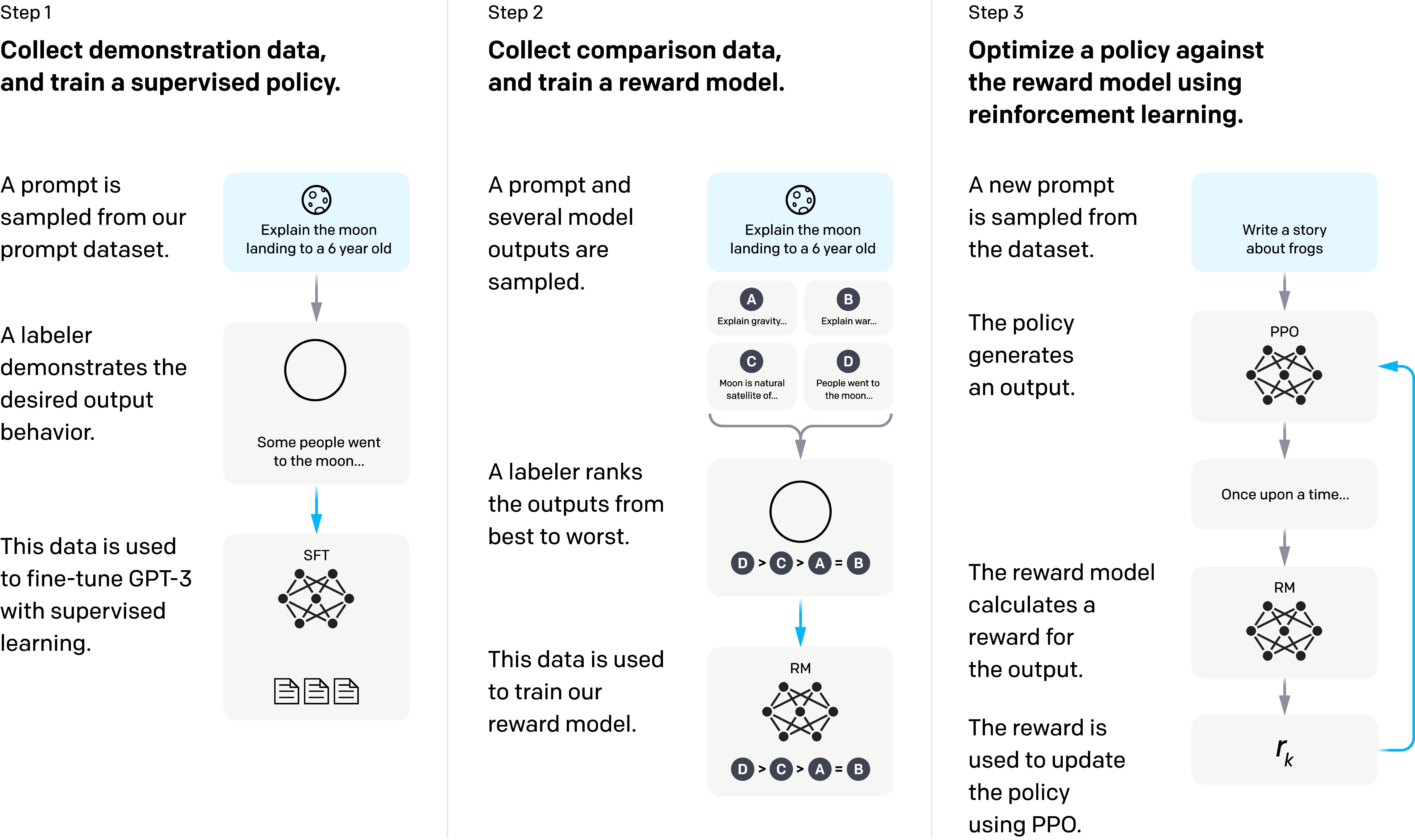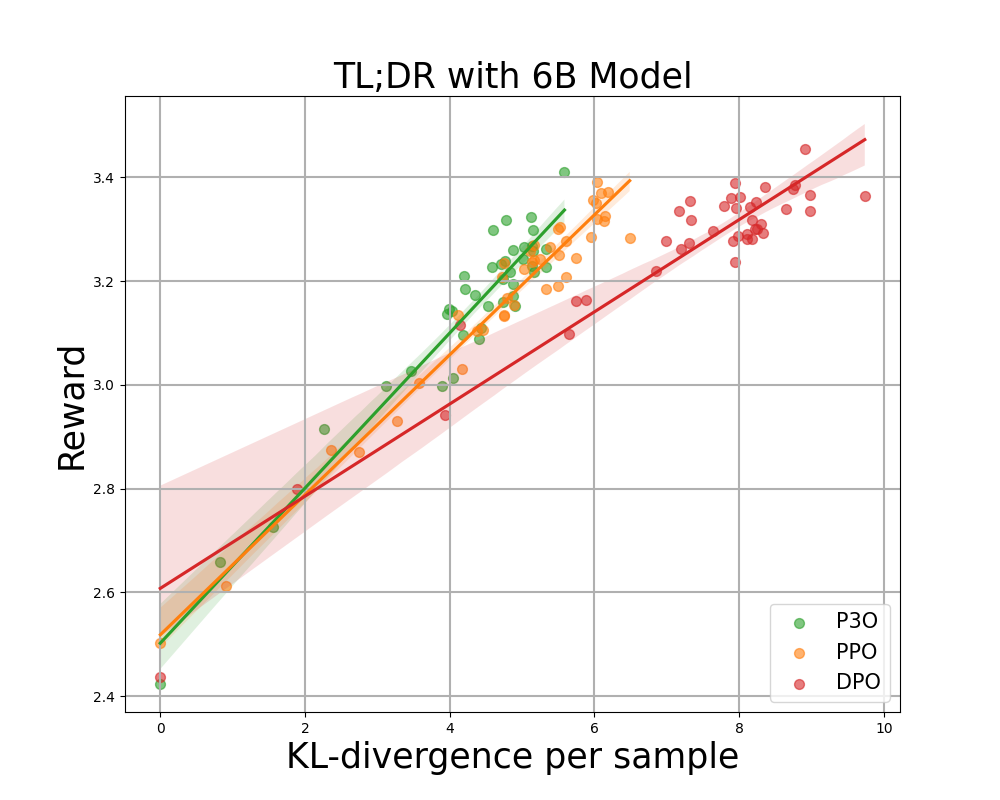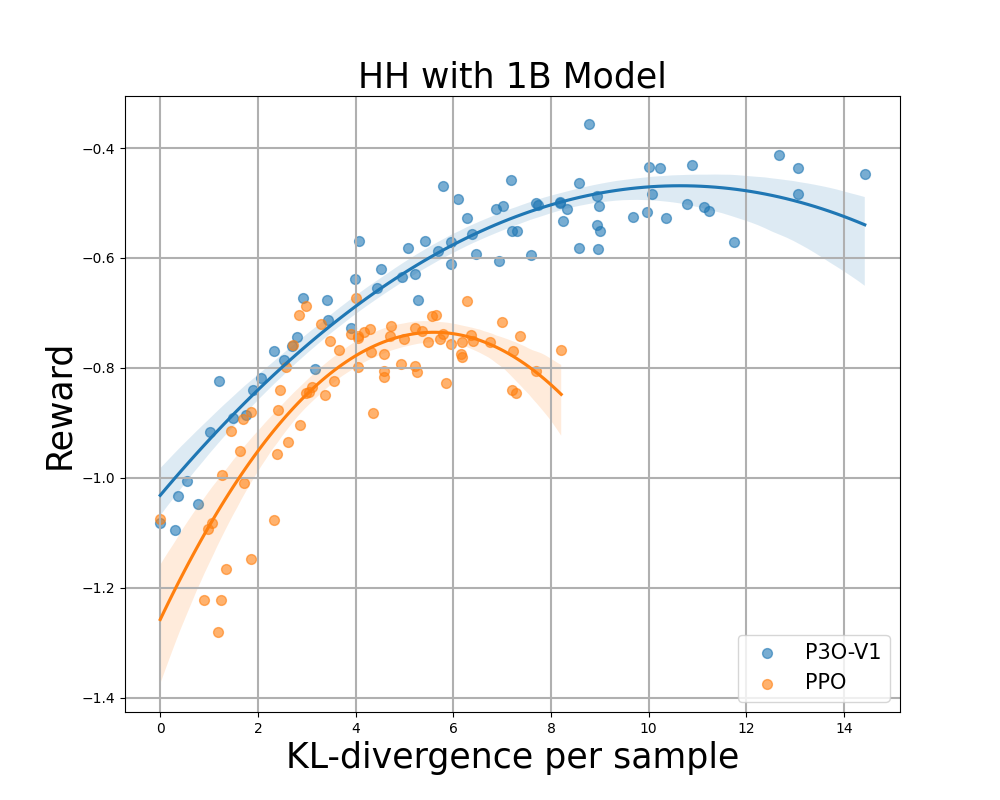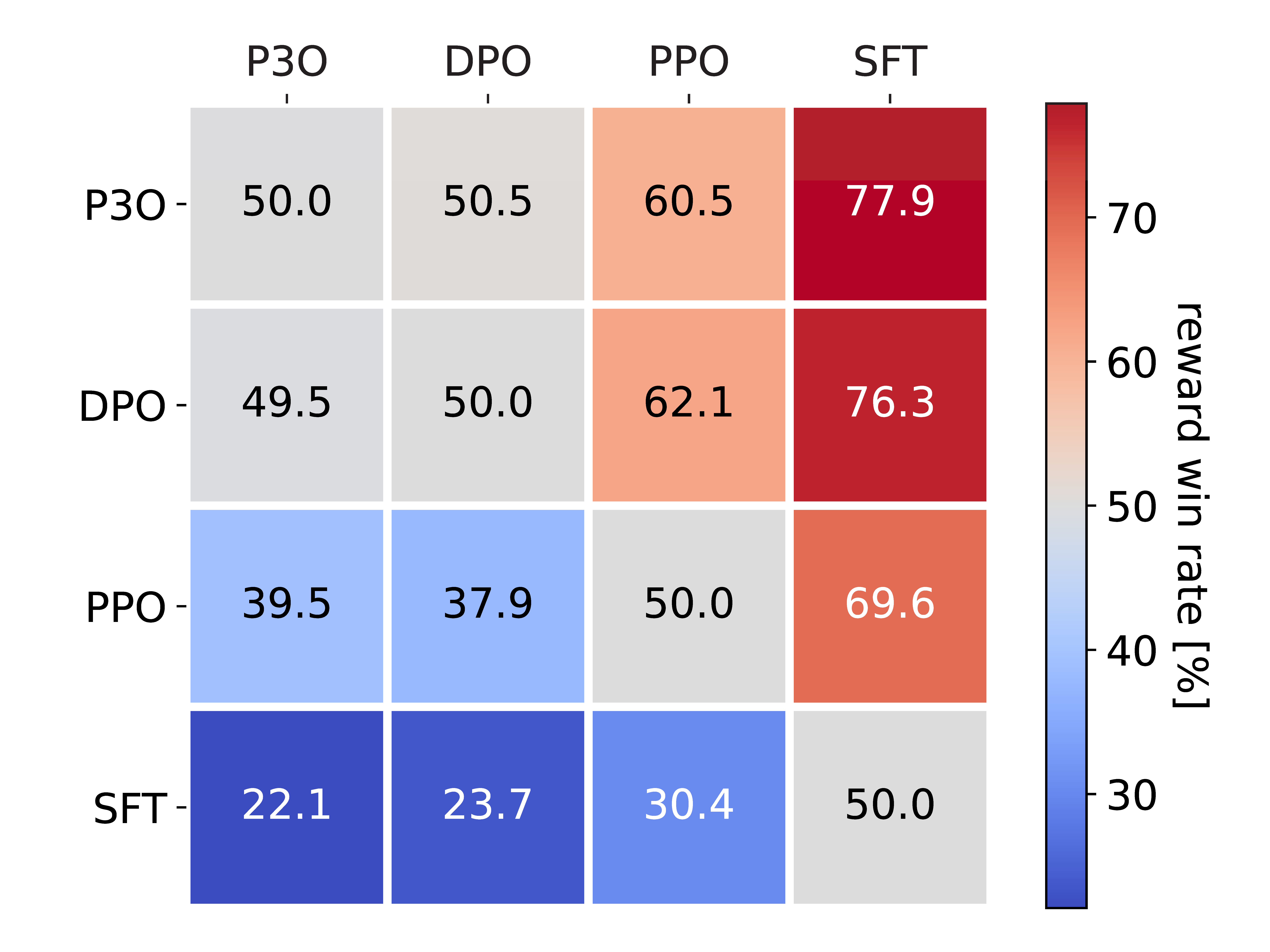TL;Ph.D.: In RLHF, there’s a rigidity between the reward studying section (utilizing human preferences in a comparative type) and the RL fine-tuning section (optimizing a single non-comparative reward). What if we did reinforcement studying in a comparative manner?

determine 1:
This determine illustrates the connection between reinforcement studying and absolute give again and comparatively Suggestions. By incorporating a brand new part, the pairwise coverage gradient, we will unify the reward modeling stage and the reinforcement studying stage, enabling direct updates primarily based on pairwise responses.
Giant Language Fashions (LLMs) energy more and more highly effective digital assistants corresponding to GPT-4, Claude-2, Bard, and Bing Chat. These programs can reply to complicated person queries, write code, and even compose poetry. The expertise behind these wonderful digital assistants is Reinforcement Studying with Human Suggestions (RLHF). RLHF goals to align fashions with human values and get rid of sudden behaviors that usually end result from fashions being uncovered to giant quantities of low-quality materials in the course of the pre-training section.
Proximal Coverage Optimization (PPO), the dominant reinforcement studying optimizer within the course of, has been reported to exhibit instability and implementation complexity. What’s extra, there are persistent variations within the RLHF course of: whereas the reward mannequin is skilled utilizing comparisons between numerous responses, the RL fine-tuning stage solely works on particular person responses with none comparisons. This inconsistency can exacerbate issues, particularly within the difficult area of language manufacturing.
Towards this background, an attention-grabbing query arises: is it attainable to design a reinforcement studying algorithm that learns in a comparative method? To discover this situation, we introduce pairwise proximal coverage optimization (P3O), a way that coordinates the coaching strategy of the RLHF reward studying section and the RL fine-tuning section, offering a passable answer to this drawback.
background

determine 2:
An outline of the three phases of RLHF within the OpenAI weblog submit. Please be aware that the third stage belongs to absolute suggestions reinforcement studying, as proven on the left aspect of Determine 1.
In conventional RL settings, rewards are manually specified by the designer or supplied by a well-defined reward perform, as in Atari video games. Nonetheless, so as to information the mannequin to reply helpfully and harmlessly, well-defined rewards will not be easy. RLHF solves this drawback by studying a reward perform from human suggestions (particularly within the type of comparisons) after which making use of RL to optimize the discovered reward perform.
The RLHF pipeline is split into a number of phases, as follows:
Supervision and fine-tuning section: A pre-trained mannequin undergoes most probability loss on a high-quality dataset, the place it learns to reply to human queries by means of imitation.
Award Modeling Internship: The SFT mannequin generates the reply pair (y_1,y_2sim pi^{textual content{SFT}}(yvert x)) by means of the immediate (x). These generated responses type a knowledge set. Response pairs are offered to human labellers, who specific a choice for one reply, denoted (y_w succ y_l). Then use the comparability loss to coach the reward mannequin(r_phi):
[mathcal{L}_R = mathbb{E}_{(x,y_l,y_w)simmathcal{D}}log sigmaleft(r_phi(y_w|x)-r_phi(y_l|x)right)]
Reinforcement studying fine-tuning stage: The SFT mannequin serves because the initialization of this stage, and the RL algorithm optimizes the coverage to maximise rewards whereas limiting deviations from the preliminary coverage. Formally, that is completed by:
[max_{pi_theta}mathbb{E}_{xsim mathcal{D}, ysim pi_theta(cdotvert x)}left[r_phi(yvert x)-beta D_{text{KL}}(pi_theta(cdotvert x)Vert pi^{text{SFT}}(cdotvert x))right]]
An inherent problem with this strategy is the non-unique nature of the rewards. For instance, given a reward perform (r(yvert x)), merely remodeling the immediate’s reward into (r(yvert x)+delta(x)) creates one other efficient reward Perform. These two reward features produce the identical loss for any response pair, however they differ considerably when optimizing for RL. In excessive instances, if the added noise ends in a wide range within the reward perform, reinforcement studying algorithms could mistakenly enhance the probability of responses with increased rewards, although these rewards is probably not significant. In different phrases, the coverage could also be disrupted by the reward dimension info within the cue (x), but it surely can’t be taught the helpful half – the relative choice represented by the reward distinction.To resolve this drawback, we goal to develop an RL algorithm Rewards translation immutability.
Derivation of P3O
Our thought is derived from the overall coverage gradient (VPG). VPG is a extensively adopted first-order reinforcement studying optimizer favored for its simplicity and ease of implementation. Within the context bandit (CB) setting, the formulation for LPG is:
[nabla mathcal{L}^{text{VPG}} = mathbb{E}_{ysimpi_{theta}} r(y|x)nablalogpi_{theta}(y|x)]
With some algebraic operations, we will rewrite the coverage gradient in comparative type, involving two responses to the identical immediate.we identify it pairwise coverage gradient:
[mathbb{E}_{y_1,y_2simpi_{theta}}left(r(y_1vert x)-r(y_2vert x)right)nablaleft(logfrac{pi_theta(y_1vert x)}{pi_theta(y_2vert x)}right)/2]
In contrast to VPG, which depends immediately on absolutely the dimension of rewards, PPG makes use of reward variations. This enables us to bypass the bonus translation points talked about above.To additional enhance efficiency, we use a replay buffer significance sampling and keep away from giant gradient updates tailoring.
Significance sampling: We pattern a batch of responses from the replay buffer, which incorporates responses generated from (pi_{textual content{outdated}}), after which calculate the significance sampling fee for every response pair. The gradient is the weighted sum of the gradients calculated from every response pair.
Clipping: We clip the significance sampling fee and gradient updates to penalize overly giant updates. This system allows the algorithm to commerce off KL divergence and reward extra effectively.
There are two other ways to implement cropping methods, distinguished as single cropping or joint cropping. The ensuing algorithm is named pairwise proximal coverage optimization (P3O), and its variants are V1 or V2 respectively. Yow will discover extra particulars in our authentic paper.
Consider

picture 3:
TL;DR’s KL reward entrance, sequential KL and rewards are averaged over 200 take a look at cues and calculated each 500 gradient steps. We discovered {that a} easy linear perform matches the curve properly. P3O has the most effective KL reward trade-off among the many three.
We discover two totally different open-ended textual content technology duties, Summarize and Q&A. In abstract, we leverage the TL;DR dataset, the place the ideas (x) are discussion board posts from Reddit and (y) are the corresponding summaries. For Q&A, we use Human Helpfulness (HH), the place the prompts (x) are human queries from quite a lot of subjects, and the coverage ought to be taught to provide partaking and useful responses (y).
We examine our algorithms P3O There are a number of efficient and consultant strategies for adjusting the LL.M.we begin from Quick Fourier Remodel Methods by means of most probability coaching.For RL algorithms, we take into account dominant strategies polyphenylene ether and newly proposed information safety group. DPO immediately targets closed-form answer optimization methods for KL-constrained RL issues. Though it’s proposed as an offline alignment technique, we carry it on-line with the assistance of an agent reward perform.




Determine 4:
KL reward sure for HH, every level represents the common of the outcomes of 280 take a look at cues, and is calculated each 500 gradient updates. The 2 footage on the left examine P3O-V1 and PPO with totally different primary mannequin sizes; the 2 footage on the appropriate examine P3O-V2 and DPO. The outcomes present that P3O can’t solely receive increased rewards but additionally produce higher KL management.
As earlier analysis has identified, deviating an excessive amount of from the reference coverage may cause the net coverage to chop corners on the reward mannequin and produce incoherent continuations. We have an interest not solely in a metric well-established within the RL literature (reward), but additionally within the diploma to which the discovered coverage deviates from the preliminary coverage, as measured by KL divergence. Subsequently, we research the effectiveness of every algorithm on the frontier of its obtained reward and KL divergence from the reference coverage (KL – Rewards Frontier). In Figures 4 and 5, we discover that P3O has strict dominance boundaries than PPO and DPO at numerous mannequin sizes.


Determine 5:
The picture on the left reveals the successful fee evaluated by GPT-4. The graph on the appropriate reveals win charges primarily based on a direct comparability of agent rewards. Regardless of the excessive correlation between the 2 numbers, we discovered that the reward win fee have to be adjusted for KL so as to be in keeping with the GPT-4 win fee.
To immediately assess the standard of the responses generated, we additionally carry out face to face comparability between every pair of algorithms within the HH dataset. We use two indicators for analysis: (1) remunerationoptimization purpose throughout on-line reinforcement studying, (2) GPT-4, as a devoted proxy for human assessments of response usefulness. For the latter metric, we level out that earlier research have proven that GPT-4 judgments are strongly correlated with people, and human settlement with GPT-4 is mostly much like or increased than settlement between human annotators.
Determine 5 reveals the great pairwise comparability outcomes. The common KL divergence and reward rating of those fashions are DPO > P3O > PPO > SFT. Though the reward of DPO is barely increased than that of P3O, its KL divergence is far increased, which can be detrimental to the technology high quality. Because of this, DPO’s reward win fee relative to P3O is 49.5%, however solely 45.4% in line with GPT-4 analysis. In contrast with different strategies, P3O has a GPT-4 win fee of 57.0% in opposition to PPO and 69.3% in opposition to SFT. This result’s in keeping with the outcomes we obtained from the KL-Reward frontier metric, confirming that P3O can higher match human preferences than earlier baselines.
in conclusion
On this article, we current new insights into aligning giant language fashions with human preferences by means of reinforcement studying. We suggest a relative suggestions reinforcement studying framework, as proven in Determine 1. Inside this framework, we developed a novel coverage gradient algorithm-P3O. This strategy unifies the fundamental ideas of reward modeling and reinforcement studying fine-tuning by means of comparative coaching. Our outcomes present that P3O surpasses earlier strategies when it comes to KL reward bounds in addition to GPT-4 win fee.
bibliographic textual content
This weblog is predicated on our latest papers and blogs. If this weblog has impressed your work, please take into account citing it within the following methods:
@article{wu2023pairwise,
title={Pairwise Proximal Coverage Optimization: Harnessing Relative Suggestions for LLM Alignment},
creator={Wu, Tianhao and Zhu, Banghua and Zhang, Ruoyu and Wen, Zhaojin and Ramchandran, Kannan and Jiao, Jiantao},
journal={arXiv preprint arXiv:2310.00212},
yr={2023}
}



